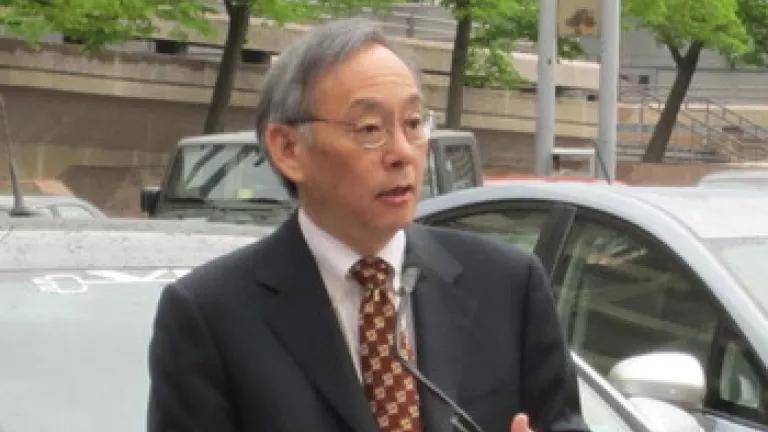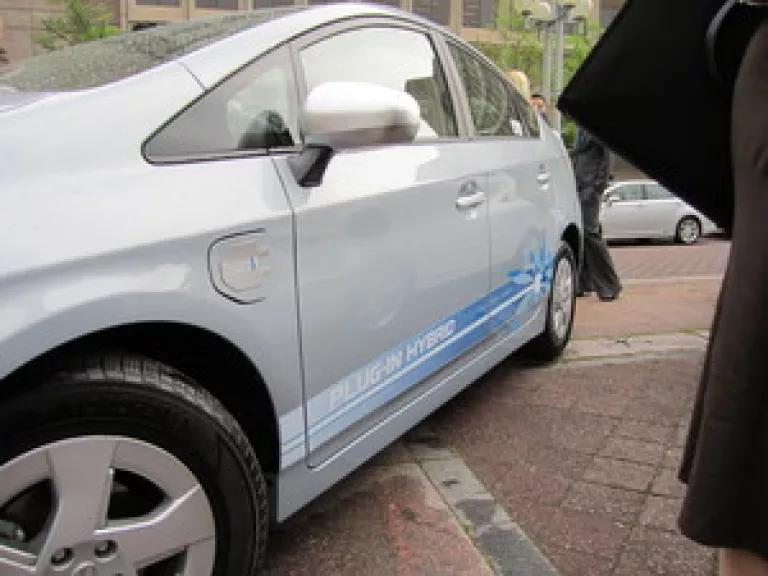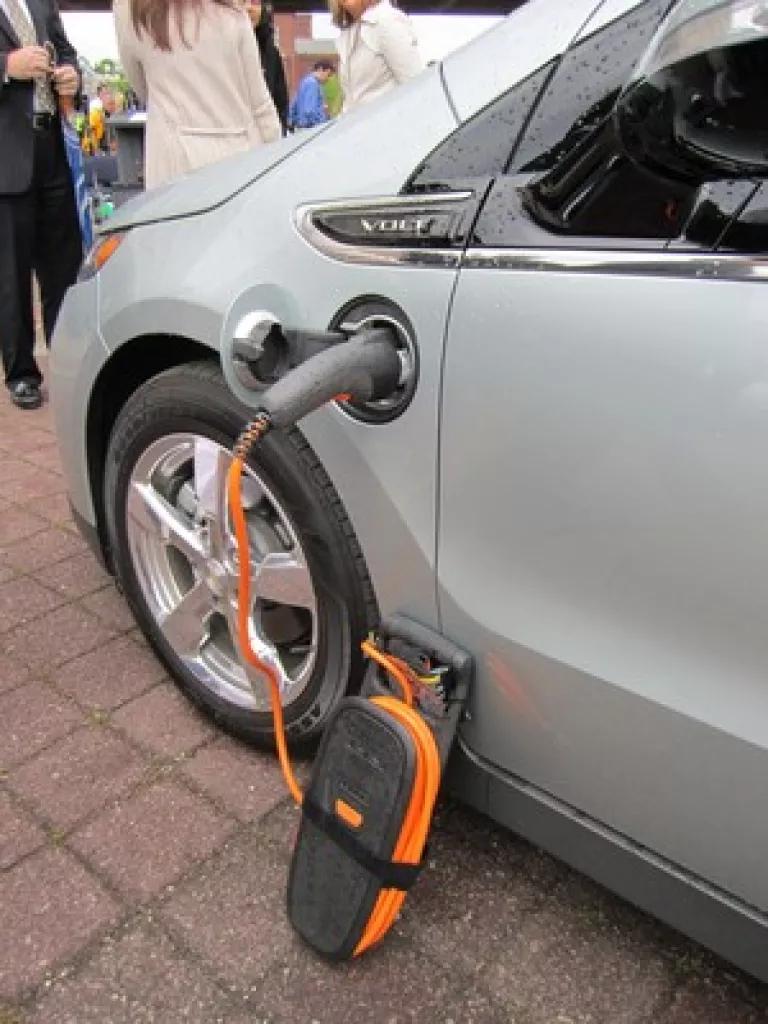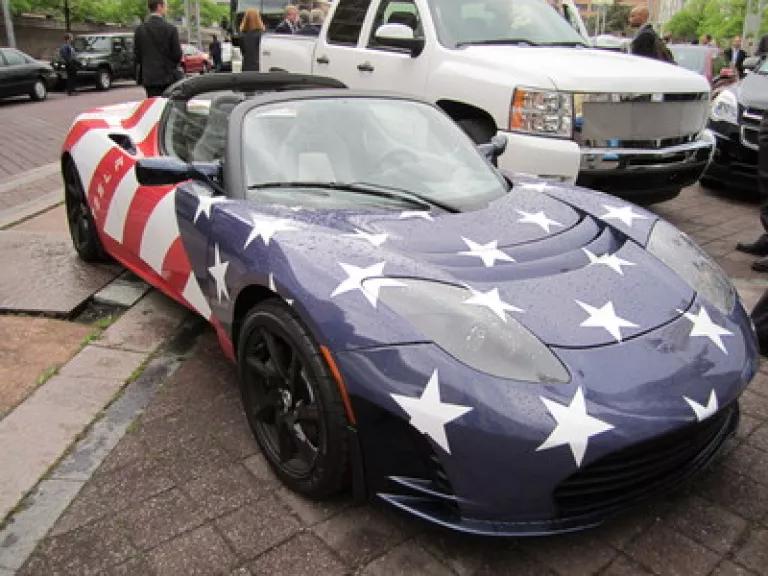
This morning, Secretary of Energy Steven Chu kicked-off the Innovation Motorcade from the Department of Energy Headquarters in Washington. This was not a typical motorcade for the Capitol City. Instead of long black limos with government plates, this was a parade of quiet, clean electric vehicles occupied by citizens proud to be driving around on little, if any, gasoline.
President Obama recently announced a goal to cut our oil imports by one-third by 2025. We can meet the President’s goal using efficiency in our transportation sector. Strong new vehicle fuel efficiency and lower pollution standards—reaching 60 mpg by 2025—can dramatically cut our oil consumption and clean our air.
Secretary Chu agrees. When asked today about what we can do cut our oil dependence and deal with high gas prices the Secretary responded: 1. Improve fuel efficiency of new vehicles and 2. Deploy electric vehicles. During his remarks, the Secretary reiterated the President’s goal to put 1 million plug-in electric vehicles on the road by 2015, which my colleague Simon Mui points out is a very achievable target.
Strong vehicle efficiency standards are key to bringing plug-in vehicles to the mass market. And while gas prices are high today we don't know what future years will bring. We are dependent on an extremely volatile global oil market and we don’t know what future prices will be. Strong standards, however, provide market certainty needed by automakers to continue to invest in plug-in electric and other innovative vehicles. A weak standard, conversely, will do nothing to incentivize plug-in electric vehicles and leave consumers will fewer choices in fuel-efficient vehicles.

The Secretary said we are in a global race to be a leader in clean energy technology. We need to seize the moment and take leadership. We are already lagging other countries in auto efficiency and carbon emission standards. But we can catch up with strong model year 2017 to 2025 standards.
Along with efficiency standards, public-private partnerships can help drive deployment of advanced, electric-drive vehicles and their infrastructure. Secretary Chu pointed out that past partnerships are responsible for cultivating American invention and creating market dominance in the semiconductor, computer and aviation industries. Due partly to existing investments by both DOE and the private sector, Secretary Chu expects battery costs to drop precipitously and that electric vehicles will be at cost parity with internal combustion engine-only vehicles by the end of this decade.
He said new public-partnerships are being formed. Today he announced a partnership between DOE and Google in which the internet giant will map out electric vehicle charging stations so you find them on your smart phone. The Secretary also said DOE is making $5 million available to local communities to help them plan and deploy plug-in vehicle infrastructure.

Getting the infrastructure ready for electric vehicles is an important part of wide-spread plug-in electric vehicle deployment. We need charging systems that are easy to use and draw power from excess electricity production capacity such as at night. Infrastructure deployment will be among the topics discussed at this week’s annual DC electric-drive conference sponsored by the Electric Drive Transportation Association. The conference brings together automakers, charging infrastructure companies, public interest groups and policymakers to share ideas about moving electric-drive vehicles into the mainstream.
Today’s clean car and truck parade is a clear example that we can innovate to solve our oil addiction. We need to grab the moment by setting strong efficiency and pollution standards that will encourage clean advancements like plug-in electric vehicles and we need to execute plans to deploy needed infrastructure. With the right policies clean, efficient vehicles can be more than just part of an oil-free parade; they can be an option for every household. That’s good for consumers, the environment and our nation’s security.


